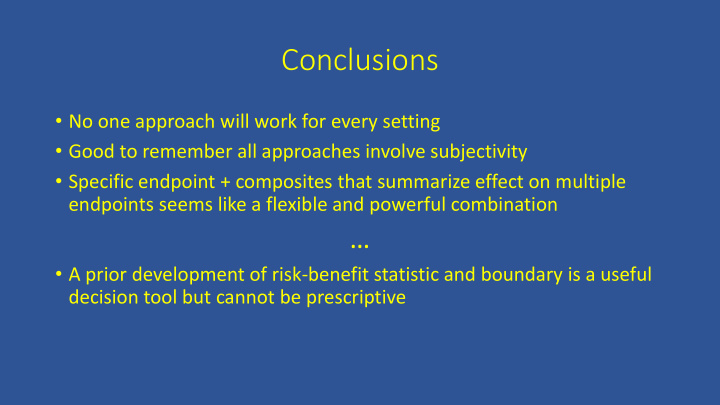



Conclusions • No one approach will work for every setting • Good to remember all approaches involve subjectivity • Specific endpoint + composites that summarize effect on multiple endpoints seems like a flexible and powerful combination … • A prior development of risk-benefit statistic and boundary is a useful decision tool but cannot be prescriptive
Comments • Tension between suitability for a given trial and wide acceptability • Optimum is in the eye of the beholder – sponsor/funder vs investigator vs DSMB • Midcourse changes are very apt to meet resistance • Whatever the basis of choosing the primary endpoint for monitoring, stick with it; explore alternative choices in final analysis • If something very alarming occurs, the DSMB must bring in the other stakeholders, just as in the case of a recommendation to stop
A Framework for Risk-Benefit Evaluations in Biomedical Research From Rid A and Wendler D (2011). Kennedy Institute of Ethics Journal • Guidance for IRBs in judging whether the risk of harm to a patient exceeds the prospect of benefit • No matter how much data there are, weighing harms against benefits is challenging • “From a practical perspective … it is important to note that clinicians routinely make similar evaluations in the context of clinical care…. This suggests that [IRB members] should adopt an informed clinician’s perspective to determine whether individual research interventions pose, or do not pose, net risks.”
Similarity between IRBs and DSMBs • IRBs and DSMBs have similar challenges in assessing the balance of harms and benefits, IRBs for every research intervention, DSMBs for a single intervention and a body of new data collected to inform the assessment. • When it comes to addressing that balance, informed clinical judgment may be the best approach, but whose?
Recommend
More recommend